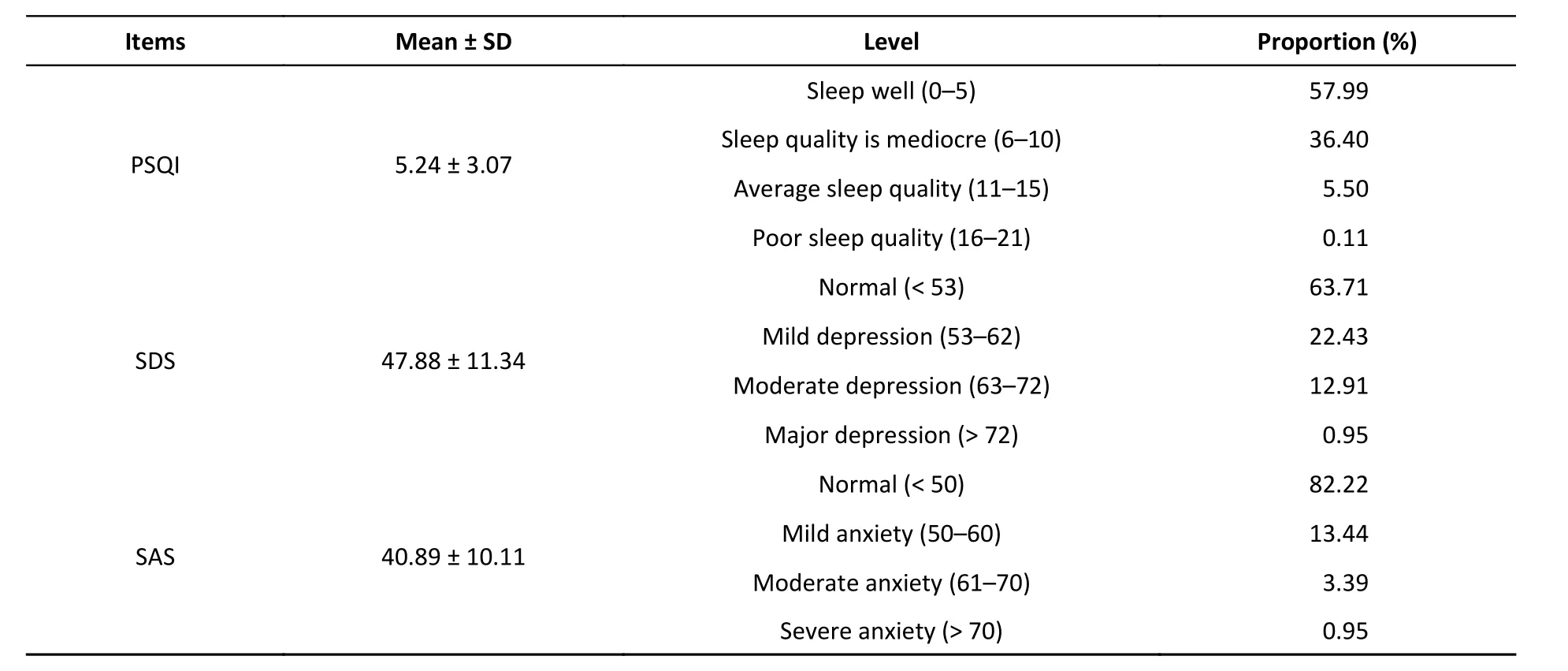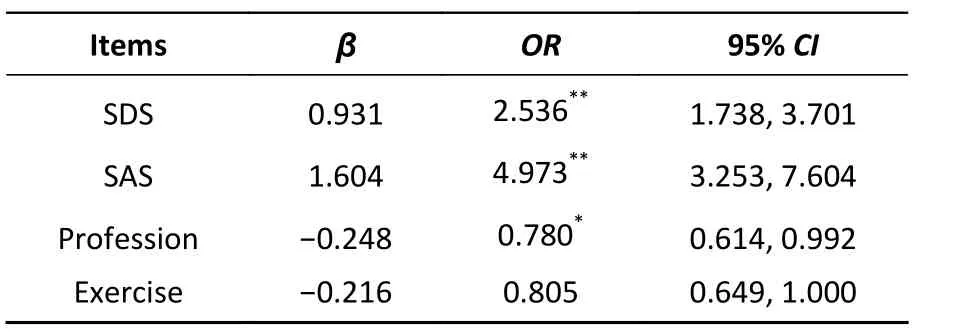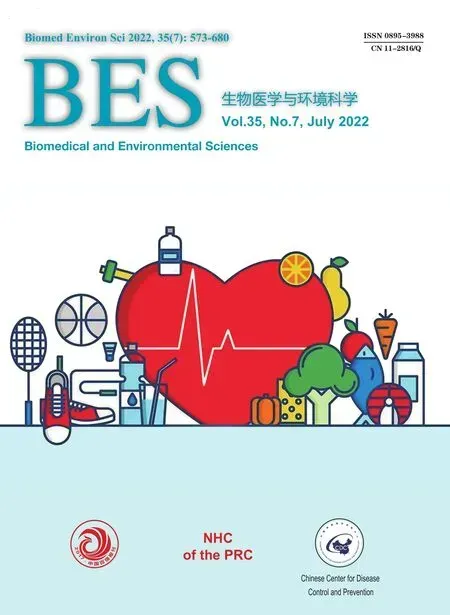Correlation between Anxiety, Depression, and Sleep Quality in College Students
Sleep disorders will lead to difficulties in entering or maintaining sleep. Short-term sleep disorders will affect people’s attention and memory, and longterm sleep disorders will lead to a decline in human immunity and induce some potential physical diseases and psychological diseases such as anxiety symptoms and depressive symptoms[1]. Facing pressure from study, life, employment, and other aspects, college students are prone to depressive symptoms, anxiety symptoms, sleep disorders, and other problems.
Thus, this study aimed to investigate the sleep,psychological, and living habits of college students to understand the sleep quality of college students in China and determine possible influencing factors.The results would help improve the sleep condition of college students and provide a scientific basis for psychological health education and psychological crisis intervention for college students.
From June 21 to July 12, 2021, online questionnaires were sent to college students(https://www.wjx.cn/vj/O1euEE5.aspx), and a total of 945 valid questionnaires were received. Each respondent completed a written informed consent form. The survey contents included basic information about college students (sex, age, year level, major, sports, eating pattern, economic status,preparation for a postgraduate entrance examination or employment, etc.), Pittsburgh sleep quality index (PSQI), self-rating anxiety scale (SAS),and self-rating depression scale (SDS).
Among them, PSQI is suitable for the evaluation of the sleep quality of patients with sleep and mental disorders and the general population. Higher scores indicate poorer sleep quality. PSQI > 7 was considered a sleep disorder[2]. Psychological status was assessed by the SDS and SAS, which are commonly used scales in psychopharmacology research: the higher the score, the more severe the anxiety or depression symptoms. The upper limit reference value of the SDS standard score is 53,where < 53, normal; 53–62, mild depression; 63–72,moderate depression; ≥ 72, severe depression. The upper limit reference value of the SAS standard score is 50 points; < 50, normal; 50–60, mild anxiety;61–70, moderate anxiety; and > 70, severe anxiety[3].
Before the formal investigation, the investigators should be trained in a standard way, and the investigators should be organized to conduct a small pre-investigation to test the rationality of the questionnaire design.
After data entry, IBM SPSS STATISTICS 21.0 (IBM Corp. Released 2012. IBM SPSS Statistics for Windows, Version 21.0. Armonk, NY: IBM Corp.) was used for statistical analysis. Sleep quality, depressive symptoms, anxiety symptoms, and basic demographic characteristics were described and analyzed. PSQI, SDS, and SAS scores were measured by means (+s). Analysis of variance was used for between-group comparisons. The chi-square test was used if homogeneity of variance was not met.Pearson correlation analysis was used to quantitatively describe the correlation between PSQI, SDS, and SAS. Binomial logistic regression analysis was used to examine the relationship between sleep quality and depressive and anxiety symptoms, and the logistic regression equation was constructed to determine the predictive effect of each factor. The test level α of this study was set as 0.05, andP< 0.05 was considered significant.
The survey included 483 men (51.11%) and 462 women (48.89%), with an average age of (20.15 ±1.65). Moreover, 54.18% of the college students majored in medicine. Freshmen and sophomores accounted for 17.29% and 47.83%, respectively;95.05% of the students are willing to take postgraduate examinations or employment, and 93.33% spend less than one-hour exercising(Supplementary Table 1, available in www.besjournal.com).
The average sleep quality score of the college students was (5.24 ± 3.07); 60.32% of the college students fall asleep after 12:00, 56.93% of them spend > 15 min from going to bed to falling asleep,and 58.2% sleep < 7 h. Moreover, the sleep quality of 21.80% of the college students is poor (PSQI > 7),which is significantly higher than the detection rate of sleep disorder among college students reported by Shi Shaoping in 2013 of 16.4%[4]. The results show that the sleep quality of college students is declining daily. Determining the main factors that affect the sleep quality of college students and making corresponding preventive measures are the primary issues of current research.
The average SDS and SAS scores of the college students were 47.88 ± 11.34 and 40.89 ± 10.11,respectively. Moreover, 36.29% and 17.78% of the college students had depressive and anxiety symptoms, respectively (Table 1). Studies have shown that the mental health level of college students is increasing annually[5]. However, under the condition that the psychological pressure of college students decreases annually, sleep quality also shows a downward trend, indicating that the role of other factors is strengthening or influencing factors are increasing.

Table 1. Descriptive statistics of sleep quality, depression, and anxiety scores of college students
No significant difference was found in sleep quality among students, sexes, grade, economic status, and postgraduate entrance examinations or employment intentions. Among them, 55.30% of the college students with postgraduate or employment intentions are freshmen and sophomores. These students still have a long time to take the postgraduate entrance examination and find employment, and psychological stress caused by this factor is not observable. Therefore, this may account for the lack of significant differences in sleep quality between them and students who are not interested in postgraduate entrance examinations or employment.
Among college students of different majors, the difference in sleep quality between science and technology majors and other majors was significant(P< 0.05), and the sleep quality of science and technology majors was the worst (5.64 ± 3.10).
Different dietary patterns also had significant effects on sleep quality (P< 0.05). The PSQI scores of students who ate light food (5.00 ± 3.18) were lower than those who preferred greasy food (5.43 ± 2.90).Some studies have proved that snacks and greasy food are risk factors for sleep disorders, whereas whole-grain foods are protective factors against sleep disorders. Therefore, college students can improve their sleep quality and mental health status by changing their dietary patterns. Moderate physical activity is good for improving health. Among the 945 college students in this investigation, 93.33%exercised for less than 1 h, whereas the PSQI and SDS scores of those who exercise for more than 1 h a day are significantly lower than those who do not exercise or do not exercise enough (P< 0.05).Nowadays, society has provided more comforts for young people. The popularity of transportation tools,development of the food delivery industry, and prosperity of the Internet world have gradually hindered the intentions of sports among contemporary young people. Therefore, it is necessary to improve the health awareness of college students, consciously perform physical exercise, improve the quality of sleep, enhance physical fitness, and form a virtuous cycle.
Resultsof the Pearson analysis on sleep quality and severity of anxiety and depressive symptoms of college students are shown in Table 2. PSQI, SDS,and SAS showed a significant positive correlation,among which the correlation between sleep quality and anxiety symptoms was greater than that between sleep quality and depressive symptoms.
Binomial logistic regression analysis was conducted based on whether the sleep quality was normal as the dependent variable, whereas anxiety(< 53), depression (< 50), sex, grade, major, exercise,eating pattern, economic situation, and participation in the postgraduate entrance examination are independent variables. Univariate analysis was first conducted, significant independent variables were selected, and multivariate analysis was performed.
To prevent significant independent variables from being excluded by univariate analysis, the test level was set toP< 0.1. In the univariate analysis,SDS score (P< 0.01), SAS score (P< 0.01), sports status (P< 0.05), and majors (P< 0.05) were significant; thus, these factors were included in the multivariate analysis (Table 3).

Table 2. Correlation between PSQI, SDS, and SAS (R)

Table 3. Results of the binomial logistic regression analysis on the sleep quality of college students
The regression model shows that students with depression were 2.5 times more likely to have poor sleep quality than those without depression, those with anxiety were 4.97 times more likely to have poor sleep quality, and anxiety symptoms have greater effects on sleep than depressive symptoms.

In addition, the results showed that 59.55% of the students with depressive symptoms did not have sleep disorders, and 41.56% of the students with anxiety symptoms did not have sleep disorders.Furthermore, studies have shown that insomnia does not completely disappear as depressive symptoms ease[6]. Therefore, insomnia can exist independently of mental disorders, mental disorders do not necessarily affect the sleep quality, and sleep and mental disorders independently occur.
Most of the local and international studies have only proposed the predictive effect of mental health status on sleep quality or sleep disorder on mental health. However, the relationship between the two should have a more complex bidirectional relationship, and relying only on the current crosssectional study and descriptive analysis cannot accurately and comprehensively express the interaction mechanism between the two.
In the context of the COVID-19 pandemic,cognitive behavior therapy (CBT) is one of the measures to improve sleep, especially Internet CBT(ICBT), to help prevent the spread of infection during the pandemic[7]. Studies have proved that ICBT can treat psychiatric symptoms such as insomnia, and CBT has been used as a first-line treatment for insomnia for more than 20 years. With the rapid development of Internet technology, ICBT has attracted increasing attention because of its easy access, unrestricted by time and space, low cost, and personalized module setting. At present, the main ICBT treatment platforms abroad include SHUTI, Go! To Sleep, CBT-I Coach,Sleepio, and Sleepcare. The ICBT treatment platforms in China include CCBT, Good Sleep 365APP, and WeChat public accounts based on the WeChat platform (sleeping with you and an assistant).
This study has some limitations. First, the study focused on the Hubei Province; thus, the conclusions cannot be extended to the whole country. Second,the study was unable to calculate the psychological effect of COVID-19 on students with different majors. Third, this study mainly used self-reported questionnaires to measure psychiatric symptoms and did not make a clinical diagnosis. Forth, the study was conducted amid the COVID-19 pandemic,which may affect the psychological condition of college students and their sleep quality. However,the effect of these factors on the sleep quality of university students was not considered in this study.
In brief, to effectively improve the sleep state of college students, schools should strengthen education related to healthy sleep for college students and improve their sleep health awareness.Moreover, they should pay attention to the psychological health of students, conduct regular psychological evaluations, and improve interventions to relieve psychological pressure.
&These authors contributed equally to this work.
#Correspondence should be addressed to ZHAN Jian Bo, E-mail: jbzhan8866@163.com; CHENG Jing,E-mail: chengjing84@wust.edu.cn, Tel: 86-27-68893661.
Biographical notes of the first authors: ZHANG Yu Tong, female, born in 1998, B.S., majoring in public health;HUANG Tao, male, born in 1984, B.S., majoring in public health; ZHUO Fang, female, born in 1983, M.A., majoring in public health.
Received: February 7, 2022;
Accepted: May 6, 2022
 Biomedical and Environmental Sciences2022年7期
Biomedical and Environmental Sciences2022年7期
- Biomedical and Environmental Sciences的其它文章
- Correction
- Periodontal Ligament Stem Cells Reverse the High Glucose Level-lnduced lnflammatory State of Macrophages*
- Oyster Protein Hydrolysate Alleviates Cadmium Toxicity by Restoring Cadmium-lnduced lntestinal Damage and Gut Microbiota Dysbiosis in Mice via lts Abundance of Methionine, Tyrosine, and Glutamine*
- Expression of Thioredoxin System Protein lnduced by Silica in Rat Lung Tissue*
- Oxidative Damage to BV2 Cells by Trichloroacetic Acid:Protective Role of Boron via the p53 Pathway*
- The putative NAD(P)H Nitroreductase, Rv3131, is the Probable Activating Enzyme for Metronidazole in Mycobacterium Tuberculosis*
